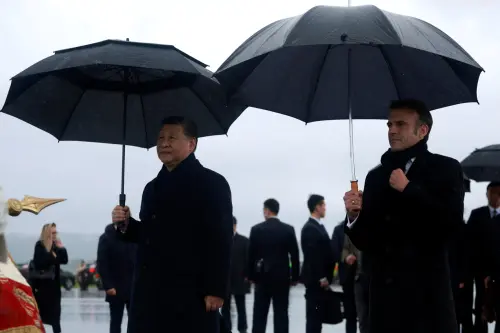INTRODUCTION
Five decades after Fidel Castro’s “26th of July Movement” marched victoriously into Havana on New Year’s Day, 1959, the United States and Cuba, separated by less than 100 miles of choppy waters, remain deeply distrustful neighbors entangled in a web of hostilities. Heated U.S. policy debates over how best to respond to the Cuban Revolution—through legislation in the Congress or executive orders issued by the Executive Branch—implicitly assume that there are only two players in contention: Washington and Havana. Yet, this conceit takes us very far from the realities of Cuba today.
Since the collapse of its former patron, the Soviet Union, a resilient Cuba has dramatically diversified its international economic relations. Initially, Cuba reached out to Europe, Canada, and a widening array of friendly states in Latin America. Over the last decade, Cuba has reached out to forge economic partnerships with major emerging market economies—notably China, Brazil, and Venezuela. Spanish firms manage many of the expanding hotel chains in Cuba that cater to 2.5 million international tourists each year. A Canadian company jointly owns mining operations that ship high-priced nickel to Canada and China. In the next few years, China is poised to spend billions of dollars building a large petrochemical complex at Cienfuegos. A Brazilian firm will modernize the Mariel Port so that it can accommodate very large container ships transiting the newly widened Panama Canal. Petroleum companies from ten or more countries have lined up to explore for deepsea oil in Cuban waters in the Gulf of Mexico.
Despite these advances, the Cuban economy remains in the doldrums (as described in Section 1). The main constraint slowing the Cuban economy is not U.S. sanctions (even as they have hit hard). Rather, it is Cuba’s own outdated economic model, inherited from the Soviet Union, of central planning. Cuba’s many commercial partners would like to invest more in Cuba and would prefer to purchase more Cuban exports to correct the imbalances in their bilateral trade accounts, but are frustrated by Cuba’s scant economic offerings.
Section 2 of this policy paper tells the story of Cuba’s outreach to the dynamic emerging market economies, as seen from the perspective of Cuba and also through the eyes of its Chinese, Brazilian, Venezuelan and Mexican partners—examining their motivations as well as their anxieties and frustrations. How does Cuba fit into their international economic and geo-political strategies, and what are the domestic political drivers behind their friendships with Havana? Canadian interests are also explored, as Ottawa has sharply differentiated its Cuba policy from those of its close North American ally.
While comprehensive U.S. sanctions attempt to undermine the Cuban economy, European countries have been sending development assistance, albeit in modest amounts. European aid targets its resources to empower municipalities, private farmers and cooperatives—to strengthen social forces less dominated by Havana’s powerful bureaucracies. Section 3 describes these European and Canadian cooperation programs as well as the creative initiatives of the non-governmental organization Oxfam, and draws lessons—pointing out potential pitfalls as well as opportunities—for future international development programs operating in the difficult Cuban context.
One hundred and eighty-seven nations are members of the International Monetary Fund (IMF) and World Bank—virtually equivalent to the universal membership of the United Nations. Cuba’s absence from these leading international financial institutions (IFIs) stands out as a stark anomaly. As Section 4 of this paper reveals, Cuban authorities are no longer opposed to engaging with the IFIs. As institutions that pride themselves on their universality, the IFIs ought to reach out to assist Cuba as it strives, however gradually and haltingly, to reform its economic structures. With their deep experience in countries seeking to improve the efficiency and competitiveness of their economies, and to transit to more decentralized modes of economic decision making, the IFIs are natural partners for Cuba today.
This paper recommends a step-by-step approach, beginning with modest confidence-building measures, for bridging the gap between the IFIs and Cuba. It also addresses legal and political constraints on U.S. policy, including restrictive Congressional mandates, and suggests practical strategies for overcoming them. Information gaps in the public debate are corrected; in fact, there are viable mechanisms for gradual rapprochement.
Many Cubans remain suspicious of the IMF and World Bank, viewing them as agents of “capitalist imperialism.” Yet, the IFIs have worked successfully in promoting poverty alleviation and economic growth in two of Cuba’s closest allies, Vietnam and Nicaragua. To ally Cuban anxieties, Section 5 explores the IFI’s new terms of engagement, designed to be more sensitive to the national institutions and policy priorities of borrowing countries. The IFIs today partner successfully with many countries whose stated goals are growth with equity, efficiency with dignity—the very goals embraced by Cuban authorities.
This study (Section 1) opens with a discussion of the accomplishments and shortcomings of the ailing Cuban economy: the paradox of the Cuban revolution is that while it endowed its citizens with abundant human capital it has sadly left them without the tools or incentives to fully employ their acquired talents. The Cuban economy is characterized by sagging industrial and agricultural production, insufficient savings and investment rates, poor export performance and chronic deficits in merchandise trade, and repeated suspensions of service on external debts. The scarcity of consumer necessities, over-crowded housing, and the indifferent quality of services make daily life in Cuba especially challenging, and ambitious Cuban youth are frustrated at the lack of attractive opportunities for productive and well-paid employment.
The Cuban government recognizes these deficiencies and in April 2011 promulgated reform “guidelines” with 311 initiatives aimed at addressing these and other structural flaws. The guidelines are replete with internal contradictions and continue to render homage to central planning; but the pro-reform fractions were strong enough to insert language which, if acted upon, would transform Cuban political culture and social ethics. As this study suggests, in our interdependent world, external agents—such as national economic cooperation agencies and the IFIs—can legitimately transfer ideas and resources that increase the authority of reformers in their internal struggles against the entrenched forces of inertia and resistance. Notwithstanding its centralized leadership, Cuba, like the United States, is hardly a unitary actor.
This policy contribution seeks to reframe the debate, to break it loose from the narrow U.S.-Cuban bilateral optic, to instead appreciate the opportunities offered by Cuba’s pro-reform impulses, to grasp the breadth of Cuba’s international economic relations, to examine more closely the economic cooperation programs of our allies on the island, and to reconsider U.S. interests in allowing the international financial institutions to perform their proper mission of promoting economic progress in Cuba. Section 6 summarizes key findings and policy recommendations for the international development community, the IFIs, and for the Cuban and U.S. governments.
This paper flows from the traditional notion that it is in the interests of the United States, and the international development community within which the U.S. has long played a leadership role, to promote progressive economic reforms, however gradual and partial, in countries opening to international trade and investment and seeking to enhance market mechanisms and empower a domestic private sector. While there is no automatic, linear relationship between market-oriented economic reform and political liberalization, political theory and recent history suggest that one trend tends to reinforce the other, especially in the Western Hemisphere and in the long run. Moreover, in the absence of direct leverage over a nation’s political institutions, promoting economic reform may be the most realistic option for advancing political pluralism. In Cuba today, the opportunity is in economic policy, legitimized by the regime and openly and widely debated by the Cuban public; whereas the government’s powerful security apparatus maintains its tight control over political activity and insists on the hegemony of the Cuban Communist Party.
Some in the United States have long supported severe sanctions intended to starve the Cuban regime of resources and thereby precipitate a political breakdown. Yet, within the national security bureaucracy of the U.S. Executive Branch, notwithstanding occasional presidential rhetoric, there is a strong preference for gradual, peaceful evolution in Cuba. A sudden breakdown, it is feared, would entail substantial risks for U.S. interests, including an immigration crisis right off of our shores, and in the worst case, irresistible pressures for intervention to quell a bloody civil war and halt a mass exodus of refugees.
Furthermore, prolonged efforts to impoverish an economy run counter to long-standing U.S. foreign assistance policies and our fundamental humanitarianism, that favor attention to the basic human needs of the poor majorities in developing countries. The exemptions to the sanctions against Cuba that have been carved out over the years, for example allowing for the sale of some foods and medicines, and more recently, the liberalization of family travel and remittances, speak to these American traditions.




